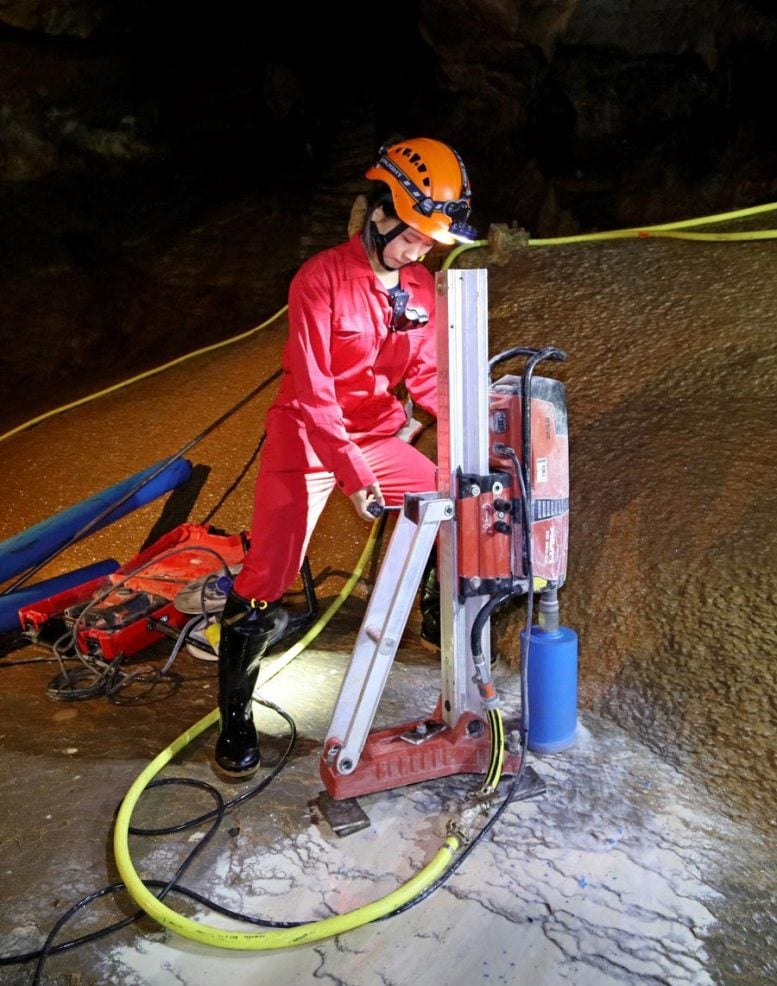Scientists have decoded the mystery of Earth’s hottest period 400,000 years ago by studying cave formations and ocean data.
Their findings explain how weak solar radiation and moderate greenhouse gases led to significant ice melt and high sea levels, offering important lessons for current global warming scenarios.
Earth’s Climatic Shifts
Over millions of years, Earth has experienced cycles of ice ages and warm periods. Today, we find ourselves in a warm period heavily influenced by human activities. As greenhouse gas levels in the atmosphere rise, global warming intensifies, causing ice sheets to melt rapidly, sea levels to rise, and posing severe threats to global ecosystems and human societies. Understanding the mechanisms behind these warming periods by studying past extreme warm periods is a crucial task for modern scientists.

Unraveling the MIS 11c Paradox
The hottest warm period in the past million years is believed to have occurred around 400,000 years ago. During this time, the Northern Hemisphere had less ice than today, and sea levels were about 10 meters higher. Surprisingly, solar radiation, a key driver of warm periods, was weak during this time, and greenhouse gas levels were lower than today. This puzzling period, known as the “MIS 11c Paradox,”[1] has long baffled scientists.
Dr. Hsun-Ming Hu, a postdoctoral researcher from the Department of Geosciences at National Taiwan University (NTU), along with an international team led by NTU’s Distinguished Professor Shen Chuan-Chou, has uncovered the key to this mystery. Using speleothem data from Mediterranean caves and North Atlantic ocean records, their groundbreaking research reveals the causes of the anomalous warmth 400,000 years ago. Their findings were published in the prestigious journal Dr. Hu explains that the key to solving the “MIS 11c Paradox” lies in understanding the sequence of reactions of Earth’s ice sheets, oceans, and atmosphere to solar radiation. Due to the lack of precise dating in most ocean and land records, this issue has puzzled scientists for years. In 2014, the NTU team and their European partners collected a two-meter-long speleothem core sample from Bàsura cave in northern Italy (Figures 1-3). Using high-precision uranium-thorium dating technology from NTU HISPEC laboratory (Figures 4,5), they provided accurate age control for geological records, reconstructing the environmental history of southern Europe from 480,000 to 360,000 years ago. By comparing solar radiation, global sea level changes, and various climate records, the team finally unraveled the “MIS 11c Paradox.” Dr. Shen highlights that over the past few years, the team discovered that the carbonate records from Bàsura cave are closely linked to climate changes in the Atlantic and Mediterranean regions (Hu et al. 2022a, Nature Communications, 13, 4898; Hu et al., 2022b, Nature Communications, 13, 7866). The chronology of paleoclimate records from the North Atlantic could, therefore, be controlled accurately using the precisely dated stalagmites from the cave. Their research shows that the extreme warm period of MIS 11c was due to a combination of factors. Around 426,000 years ago, increased summer solar radiation in the Northern Hemisphere first caused extreme warming in the mid-to-low latitude Atlantic. Coincidentally, as ocean warming occurred, Earth’s tilt gradually increased to make hot summers, allowing this warm water to persist for thousands of years. The prolonged transfer of heat to high latitudes through ocean currents caused an unusual, long-lasting melting of ice shelves, leading to the hottest period in Earth’s history over the past million years. MIS 11c serves as an important example for understanding global warming. Like today, this period did not have particularly strong solar radiation, but it shows that prolonged ocean warming alone can cause significant ice shelf collapse and sea level rise without requiring extremely high atmospheric temperatures or greenhouse gas concentrations. This study highlights the crucial role of oceans in driving global warming and ice shelf collapse and is of utmost importance for the future of our planet. This research was supported by the Ministry of Science and Technology’s Project, the Center of Future Earth Science Research. The international project, led by NTU’s Department of Geosciences, involved researchers from 20 institutes in Europe, USA, and Asia. In addition to Dr. Hu and Professor Shen, NTU participants included alumni Hsien-Chen Tsai, Wei-Yi Chien, Wen-Hui Sung, and Chia-Hao Hsu. References:
Key Insights From Speleothem Studies

Climate Implications From Historical Data
Consequences of Oceanic Warming on Ice Shelves
Implications for Current Climate Understanding

DOI: 10.1038/s41467-024-50207-1





















Discussion about this post